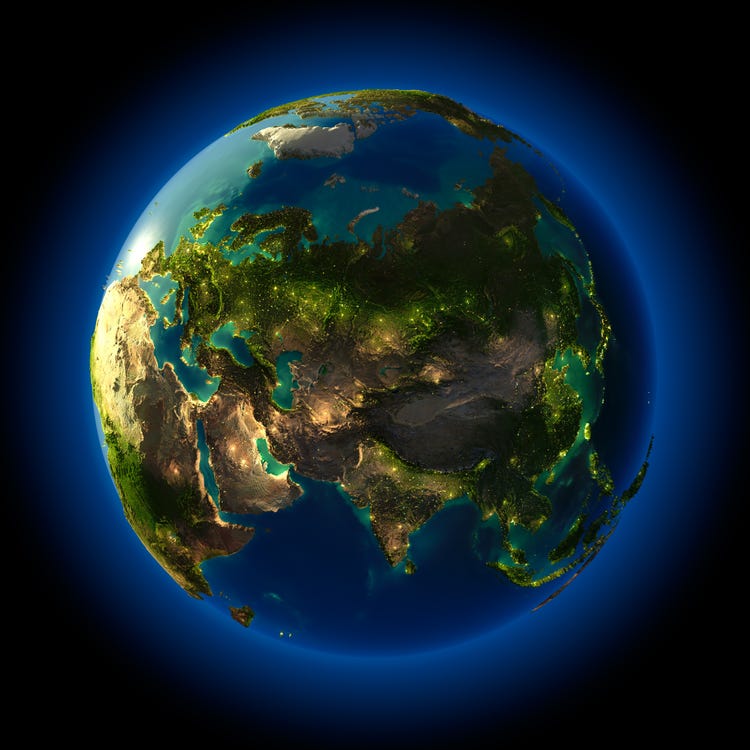What Is The Shape Of The Earth-Know Your Planet
WHAT IS THE SHAPE OF THE EARTH
For decades we have been reading about our planet Earth. I know, most of us know superficial knowledge about our planet. By this article ” what is the shape of the earth” I have tried to put more and deep knowledge about our planet, I hope you will like and enjoy it.
WHAT IS THE SHAPE OF THE EARTH :
INTRODUCTION –
The Earth is one of the planets of the solar system. It is in the third position from the Sun and the fifth largest planet in the solar system.
The mean distance of the Earth from the Sun is 149,503,000 km. The oxygen-rich and protective atmosphere, moderate temperatures, abundant water, and varied chemical composition allow the Earth to support life.
It is the only planet to do so. The slightly oblate planet is composed of rock and metal. Which are present in the molten form beneath its surface.
It is the only planet known to support life, although some of the other planets have atmosphere and contain water.
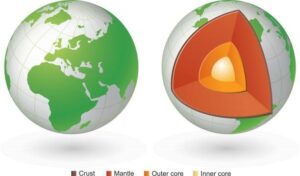
SHAPE OF THE EARTH-
The diameter of the earth measured around the equator is about 12,756 km. The earth is an oblate spheroid(but flattened at the pole) that is almost spherical, flattened a little at the poles with a slight bulge at the centre (equator).
Hence it is flat at the poles because of the flattening, the diameter of the earth measured around the north pole and the south pole is about 12,713 – 43 km less than the equatorial diameter.
STRUCTURE OF THE EARTH-
The earth is made up of a number of concentric layers of material as in the bulb of an onion, these series of Layers were formed early in the history of the planet as heavier material gravitated towards the centre and lighted material floated to the surface.
The dense solid and inner core of iron is surrounded by a liquid,iron-rich metallic alloy outer core. The lower mental consists of molten rock in the Asthenosphere and solid rock in the upper mantle and crust.
There are chemical or structural changes that form discontinuities between crust, mantle and core. Lighter elements such as silicon, aluminium, calcium potassium, sodium and oxygen compose the outer crust.
The layers are:
The crust
The upper mantle
The lower mantle
The outer core
The inner core
There is the Mohrovicic discontinuity between the crust and upper mantle, the transition zone between the upper mantle and the lower mantle, the Gutenberg discontinuity between the lower mantle and outer core. Each layer has its own characteristics and chemical composition.
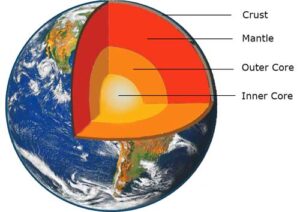
OUTER PART (CRUST)—UPPER MANTLE—LOWER MANTLE—OUTER CORE—–INNER CORE(INNER PART)
THE CRUST—
The crust is the outermost layer of the Earth. It is a solid and relatively thin layer. It lies below between both landmasses and oceans. The average thickness of the solid crust of the earth varies between 50 and 40 km.
The dry land of the Earth’s surface is called the continental crust. It is about 15 – 75 km thick. The Oceanic crust is thinner than the continental crust. Its average thickness of 5-10 km.
The crust is very thin in relation to the rest of the Earth. If a trip to the centre of the earth at 100km/hour were possible, it would take 64 hours of which the first 15-45 minute would be in the crust.
MOHOROVICIC DISCONTINUITY—
By observing the image in the article “what is the shape of the earth”, You will get to know about the information very easily.
The crust has a definite boundary. This boundary called the Mohorovicic discontinuity or simply the moho, after the Croatian Geologist Andrija Mohorovicic, separates the crust from the underlying upper mantle.
Mohorovicic discovered the boundary in 1909 when he observed that Earthquake waves do not pass through Earth’s interior in a straight line but change course at a certain depth below the surface.
He believed that the point at which these waves change course marked the boundary between the crust and the mantle.
He deduced that the earthquake was centred in an outer layer of Earthcrust and that fast waves had travelled through an inner layer, the mantle.
Read also…
UPPER MANTLE—
Below the crust is the mantle, composed of several layers, which is about 2900 km. in thickness. It is a shell of red hot rocks composed of silicate material, rich in magnesium and iron.
The mantle is partly fluid. The earth’s inner core is believed to be solid and is of a depth of about 1370 km. It is made up of iron and nickel, which accounts for the Earth’s magnetism.
The upper part of the mantle is called the Asthenosphere. Which is about 250 km thick. The rock contains in the Asthenosphere are partially molten. It is on this part that the top crust of the Earth carrying the continents and oceans rests.
Large scale deformation of the mantle results in plate tectonics at the surface and the related phenomenon of earthquake and volcanoes.
TRANSITION ZONE—
The zone about 400 to 670 km is known as the transition zone. The minerals that make up the upper mantle undergo a process phase transition.
In which they change in structure and form other atomic arrangements. The pressure at this depth compresses the minerals into more compact forms. For example, olivine is compressed into the mineral spinel, in which the atoms are packed closer together.
By the bottom of the transition zone, spinel has undergone other phase transition to the mineral perovskite. With each phase transition, the rock becomes denser and seismic waves travel through it faster.
This transition at 670 km also corresponds to the lower depth at which the earthquake has been recorded.
LOWER MANTLE-
The mantle below 670 km is called the lower mantle. The lower mantle may consist of magnesium, silicon and iron.
Unlike the upper region, this region does not change much composition or phase as it gets deeper. It is denser than the upper mantle due to an increase in pressure.
Knowledge of the mantle remains partial, but much has been learned from overthrust fragments of oceanic crust in the mountains around the pacific margin, for example, the coast ranges of California. It is the single largest uniform region of the interior.
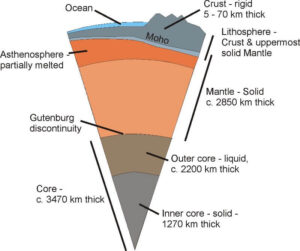
Read also…
GUTENBERG DISCONTINUITY –
The mantle is separated from the crust by the Mohorovicic discontinuity and from the core by another sharp boundary known as the Gutenberg discontinuity.
This boundary is named after German-born American seismologist Beno Gutenberg. The Gutenberg discontinuity lies at a depth of about 2900 km.
Both boundaries are discovered by using the fact that when earthquakes or seismic waves reach a sharp boundary between two materials with different densities or elastic properties.
Some of the waves energy bounces, or reflects, off the surface. In addition, seismic waves may bend, or refract as they cross a boundary.
THE INNER AND OUTER CORE—
The core is the innermost part of the Earth. It extends from beneath the mantle to the very centre of the planet. The radius of the core is approximately 3,500 km.
This radius is larger than the radius of the planet Mars. The core forms approximately one-third of the total mass and about one-sixth of total volume.
At the earlier stage of its formation, Earth was basically a mixture of gases and dust. Over millions of years, the planets took shape and solidified.
At some point, as more material accumulated, the whole planet reached extremely high temperatures and changed into a liquid.
Geologists believe that at this time the different elements in the planets separated.
In this process of separation, the heavier elements (iron, nickel)sank to the centre and the lighter elements(silicon and aluminium)rose to the surface.
INTERESTING FACTS-
“What is the shape of the earth” does not only tell you the main fact but also focus on the researching way through the point of view from scientists.
Scientists have learned about the core by measuring seismic waves. Seismic waves originating in earthquakes. The way these waves travelled through the interior of the earth reveals the natures of materials inside the planets, including in the core.
The principle behind using seismic waves to study the internal structure of the earth is similar to using X-RAYS to study the human body.
A detail view of the human body can be obtained using modern CAT(Computerized axial tomography)scanning machines, which transmit X-rays while rotating around the body.
A CAT scan thus yields a three-dimensional image of the inside of a person’s body. Geologists use a similar approach in obtaining images of the interior of the earth using seismic tomography.
Scientists collect data from thousands of recording stations that are sensitive to earthquakes. The record seismic data is analysed and combined by a computer to produce images of the earth”s interior.
This technology has provided scientist with a picture of the Earth”s interior. Seismic studies indicate that the core consists of two parts; a solid inner core and a molten outer core.
The outer core extends from about 2900 to 5200 km below the surface. The inner core extends from about 5200 km to the centre of Earth, at a depth of about 6400 km.
Earth’s core experiences pressures that are millions of times greater and temperatures that are thousands of degrees higher than those at the surface. Core temperature range from 4000 degrees C to 5000 degrees celsius.
Scientists can not retrieve the sample from the core because the temperatures and pressures are so high. However, scientists believe that the core consists primarily of heavy elements, such as iron and nickel.
This composition of the core is believed to be similar to that of stony meteorites, which Geologists think may have provided the material for Earth’s core.
Scientists estimate that the core is extremely dense –about 13.5 times as dense as water. A high concentration of iron in the core is believed to account for the high density and magnetism of Earth.
COMPOSITION OF EARTH-
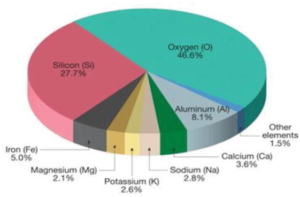
” What is the shape of the earth,” tells the rock of the lithosphere have an average density of 2.7 and are mainly made up of 11 elements, which together account for about 99.5 per cent of its mass.
Titanium, hydrogen and phosphorus (totalling less then1 per cent) are the other three elements. In addition,11 other elements are present in a trace amount of 0.1-0.02 per cent.
These elements in order of abundance are carbon, manganese, sulphur, barium, chlorine, chromium, fluorine, zirconium, nickel, strontium and vanadium.
The elements are present in the lithosphere almost entirely in the form of compounds rather than in their free state.
These compounds almost exist entirely in the crystalline state, so they are by definition, minerals.
Read also…
CONCLUSION-
I hope you have got deep and enough knowledge about our planet Earth. Keep reading and share it. Tell in the comment box, how did you like this article “What Is The Shape Of The Earth”.
Thank You
Read also…
